Our acceptance of evolution brings with it moral obligations, believes geneticist Professor David Penny, who has been fighting for greater consideration to be given to the well-being of the great apes
From the path we gaze down at them. From their grassed mound they turn an occasional incurious gaze back – primate watching primate. I have seen very few chimpanzees. For them we are just part of an eternal procession of their depilated, camera-toting, child-accompanying, gawping kin. Behind the idling chimps, beyond the grassed enclosure with its climbing poles, beyond the zoo, rise the hills and houses of Wellington.
As we watch, one of the smaller chimps breaks away and speed-shuffles towards us. Alongside me, Suzette Nicholson the curator of primates, tenses, then relaxes. Along the way Gombi, an adolescent chimp, has picked up a broken plastic water container, and now he dippers himself a drink from the moat that separates him from us, fastidiously avoiding the muddy margin.
No good was what Suzette thought this sweet, obviously misunderstood creature was up to. “Gombi is 9 now, which is like the terrible teens, and he’ll throw things at the public if he can. He runs round trying to be big and staunch,” she explains.
Gombi is one of 15 chimpanzees at the Wellington Zoo, or, more broadly, one of the around 30-or-so great apes in New Zealand. Not many, and nor do we have the complete set. Of the species that make up the great apes – chimpanzees, orangutans, bonobos (once known as pigmy chimpanzees) and gorillas – we have only the first two. Yet New Zealand is often referred to as an example by those fighting for the great apes to be brought more fully within our circle of moral consideration, or even to be granted some form of rights.
The reason is the handful of lines in our 1999 Animal Welfare Act stipulating that any experiments with the great apes must be justified on the grounds of a benefit to the apes themselves and that these experiments must have the final approval of the director-general of Agriculture.
There has never been experimentation carried out with the great apes in New Zealand. The provision is intended at least as much as an example for others as it is for domestic consumption.
 Few though they are, these lines were hard fought for by the New Zealand membership of the Great Ape Project, and one of the most persuasive of advocates was Professor David Penny. An activist by disposition – he protested the Springbok tours and the Vietnam war – he says we should accord the great apes greater consideration, letting our morality be driven by the evidence presented by our science. We now know how close to us they are. In fact, viewed through the dispassionate eyes of molecular geneticist and evolutionist David Penny, we are ourselves great apes. The differences between their species and ours are of degree, not kind.
Few though they are, these lines were hard fought for by the New Zealand membership of the Great Ape Project, and one of the most persuasive of advocates was Professor David Penny. An activist by disposition – he protested the Springbok tours and the Vietnam war – he says we should accord the great apes greater consideration, letting our morality be driven by the evidence presented by our science. We now know how close to us they are. In fact, viewed through the dispassionate eyes of molecular geneticist and evolutionist David Penny, we are ourselves great apes. The differences between their species and ours are of degree, not kind.
For the great apes – or more exactly the other great apes – life is generally far from great at all. Bonobos, chimpanzees, and gorillas are native to central and western Africa; orang-utans to Sumatra and Borneo. In these developing – or in some cases undeveloping – regions, conservation is often not a leading concern. Deforestation, the trade in baby orang-utans as pets, and, in Africa, the trade in bushmeat are whittling away great ape numbers. Their species have been given at best a vulnerable and at worst a highly endangered rating by the International Union for the Conservation of Nature.
In captivity, whether kept as pets or as circus animals, the great apes largely live their lives at the favour of their owners. Often this means a life arbitrarily cut short at the age of 7 or 8 when the tractable youngster becomes, like Gombi, an assertive, unpredictable and physically powerful adolescent. (Bebe, the matriarch of Gombi’s group at 40-plus, could live for another 20 years.)
In the US thousands of the great apes are used as laboratory animals. Animals used to roaming distances are kept in close quarters, infected with diseases such hepatitis or Aids, and subjected to medical procedures.
They are our substitute in experiments for one reason: they are so like us. Like us, some non-human primate species have naturally occurring osteoporosis and hypertension, some undergo the menopause, and they are susceptible to many of the same diseases that threaten human populations.
On the other hand, Penny believes the case for testing with the great apes is often overstated. Take Aids, for example. The epidemiological and laboratory evidence from human populations is actually very strong, and “we have learned virtually nothing of benefit to humans from infecting many chimpanzees with HIV”.
And his argument for ending experimentation with the great apes is much the same as that employed by those who want it to continue: the great apes are so like us.
Penny’s office is not much more than a glass cubicle inside a laboratory in a ’60s building on the Palmerston North campus. There’s a clutter of papers – apologised for with some perverse pride – and students are forever wandering to the door to seek guidance on papers or theses. Now is the most exciting time ever in the molecular biosciences, he says. Eternal questions are being answered.
Using DNA and protein sequences, Penny and his colleagues have looked at the origin and dispersal of modern humans, not only confirming the likelihood that humans originated in Africa, but also, with their finding that Maori share ancestry in a group of around 50 to 100 women, lending weight to the Maori oral tradition of the seven canoes that settled New Zealand.
The chimpanzee genome has been another particular interest. Penny sees the differences between human and chimpanzee as something of a test for whether microevolution – small changes over generations – is enough to account for macroevolution, the more major differences between species.
One estimate puts the genetic similarity between chimpanzees and humans at 98.76 per cent. (If you want to quibble you can find a smidgen more or less difference by selecting different categories of DNA.) Counterintuitively this makes us more closely related to chimpanzees than chimpanzees are related to gorillas.
DNA sequencing can also be used to put dates to our evolutionary history. The difference between chimpanzee and human DNA has come from the mistakes that are made as the DNA is copied from generation to generation. The errors occur at a reasonably constant rate in certain types of DNA. So if you know the rate, can compare the two DNA sequences, and have some sophisticated mathematics at your command, you can arrive at a date for a common ancestor.
The common ancestor of man and chimpanzee turns out to have walked the earth about 6.5 million years ago. Although this is around half a million years before the Grand Canyon started to form — and although it has to be realised that this is 6.5 million years in which chimpanzees and humans have evolved down their respective paths – in evolutionary terms it is the blink of an eye.
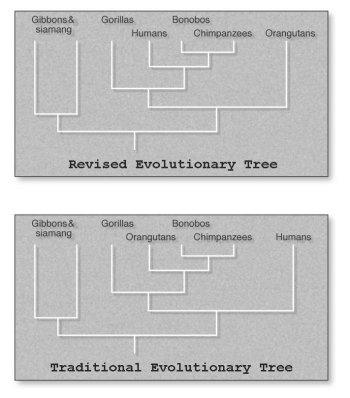
So close is our genetic makeup to that of the other great apes that the question for Penny and others like him is not why humans are so similar to the other great apes, but rather how to account for the differences. Penny’s answer: our species has a much longer growth period during which the brain and body are increasing in proportion.
If evolution seldom creates features out of nothing – and microevolution is sufficient to explain macroevolution – then we should expect our own attributes in the other great apes. And the more closely researchers look, the more this turns out to be so. Chimpanzees employ mental representations. They are self- aware. They are capable of deceit. They use tools. They transmit culture. They can acquire language.
In the mornings at Wellington Zoo the chimpanzees are given cups of blackcurrant drink fortified with vitamins. Overnight the female chimpanzees have been segregated – a welcome break from the attentions of the males. The status conscious males line up to be passed their drinks. The females and infants extend their hands through the bars in a prehensile tangle. The hands are rough and powerful; they look as if they have been crafted from black latex.
As the males head back outside to join the females they let loose with a rising anarchic chorus of pant-hoots.
Anatomy is destiny. The smartest of chimpanzees is still not going to be able to talk. They lack the breath control and physical equipment to do so. Nor should we expect a watchmaker chimpanzee. See how well you do at manipulating objects if you stop using your opposable thumb.
 But if “chatting to a chimp in chimpanzee” – to quote the Doctor Dolittle song – isn’t going to happen, having a conversation is still possible. Beginning with Washoe the chimpanzee in the 1960s, numerous great apes have been taught Modified American Sign Language or have been shown how to communicate using the lexigrams on symbol keyboards.
But if “chatting to a chimp in chimpanzee” – to quote the Doctor Dolittle song – isn’t going to happen, having a conversation is still possible. Beginning with Washoe the chimpanzee in the 1960s, numerous great apes have been taught Modified American Sign Language or have been shown how to communicate using the lexigrams on symbol keyboards.
At age 5 Washoe the chimpanzee was capable of using more than 100 signs and understanding hundreds more. Panbanisha, a bonobo, can produce about 250 words on a voice synthesiser and understand about 3000. Koko, a 26-year-old gorilla is claimed to understand about 2000 words of English and to have an IQ of between 70 and 90. These acculturated apes produce an extraordinary effect on those who meet them.
“I have been strongly influenced by some of the chimps who have been taught American sign language, and once you look a chimp in the eye and see something there that is different from a dog, you have a different perspective,” says Massey primate expert Arnold Chamove, who has met the likes of Washoe, and Lucy, who was raised from infancy by American psychologists, the Temerlins.
The Temerlins, who seem to have been like-totally-60s, raised Lucy as one of their own children, to the point that she had become, as primatologist Jane Goodall put it, a changeling, neither chimpanzee nor human. Lucy was accustomed to serving tea to guests, fixing her own pre-dinner cocktails, and masturbating to Playgirl centre-spreads. Eventually the Temerlins felt it best that Lucy move on, and she was sent to Gambia for a difficult and lengthy rehabilitation back into the wild.
“She was sent away from her family to be rehabilitated and she was depressed,” says Chamove. “I had worked as a clinical psychologist, so I knew a bit about depression. It was just like someone had taken a 5-year-old out of her family and put her in a zoo with some chimpanzees. And she was thinking ‘Jesus Christ, how long is this going to last?’ No blankets, no beds, no food she was used to.”
Could it be that Chamove was over-empathising?
“I didn’t see any substantive difference [between Lucy and someone in the same situation].”
For Suzette Nicholson at the Wellington Zoo the chimpanzee colony has all the continuing interest of a long-running and perfectly comprehensible soap opera. Recently a palace coup ousted the dominant male. “Mahdi, the youngest of the big males wanted to take over, so he tried to beat up Boyd, the alpha male, when he had been sick. What happened was that the girls all ganged up on Mahdi and chased him around the park at full speed. Now the three males share power.”
When one of the babies died the colony went into mourning. “We let the mother keep the baby for a couple of days until it became a health hazard and we took it off her. When we did, all of the other females would sit round her, grooming her and fussing over her. They do grieve. One of our females died not long ago while under anaesthetic. After she died we let the other chimps in to see that she was dead and wasn’t coming back.”
As it becomes ever more evident that we are as much the product of evolution as any other creature, and that evolution has no higher goal, so Penny hopes the centuries-old paradigm of the Great Chain of Being (GCB) will begin to crumble. The GCB is the notion that there is a progression of living things: from creatures barely alive on the lower rungs, to sentient then rational beings, and, above that, beings that are no longer anchored to material existence. Less perfect beings are there to serve more perfect beings. The GCB is us-and-them. Animals and us.
Penny finds the quote he wants and recites with theatrical enjoyment: “‘There is none that is more powerful in leading feeble minds astray from the straight path of virtue than the supposition that the soul of brutes is the same nature of our own.’ Isn’t that wonderful?”
This is the 17th century French philosopher René Descartes, but the GCB’s pedigree can be traced back to the ancient Greeks. Plato, for example, thought there were three different kinds of souls: the primitive, the mortal and the immortal, but that the immortal soul – the one that counted – resided strictly in humans, and even then not all of them; children and slaves, for example, were out of luck. The ancient Greek thought meshed nicely with the part of Judao-Christian teachings that put all of nature at man’s disposal, and in the fifth century Saint Augustine folded the one into the other.
Penny sees the GCB as a licence for environmental despotism and will be pleased to see an end to it.
As for the law, this is a 3000-year old accretion of precedent which generally holds animals, no matter how intelligent, to be no more than property. And property can neither suffer injury nor sue; injury can only be done to the owner. Hominum cause omne jus constitum – the law was made for men and allows no fellowship or bonds of obligation between them and the lower animals – runs a tag derived from Roman law. In his book Rattling the Cage, Harvard law lecturer Steven Wise puts a case for legal personhood for the great apes, but it seems unlikely that this will happen any time soon. Still, it is well to remember that it is only within relatively recent times that various groups of humanity have gained fundamental civil rights.
What Penny and his fellow members of the New Zealand Great Apes Project have wanted has been more modest. Steering clear of the contentious issue of rights, they would have liked to introduce a system of legal guardianship into the An-imal Welfare Act as a pragmatic way of dealing with the courts. In the end, the backlog of legislation awaiting Parliament in the lead-up to an election dictated what was achievable.
Of course if we admit the great apes within a widened circle of moral consideration, it begs the question of where to next. If we extend rights to the great apes, then what about those other primates that exhibit similar attributes, if to a lesser degree?
Making more of a species leap, what about, say, whales? While it is easy enough to imagine oneself inhabiting the mental landscape of a primate, says Penny, the world of a whale is almost unknowable. So much of how we perceive and interact with the world is defined by our bodies and our senses. If you put two blind people in a room they will still use hand gestures to emphasise what they are saying. Such things are hard-wired. Comprehend how the world must seem to a whale – how can we?
Questions answered with questions. If we are to discuss the issues surrounding our treatment of the great apes, then Penny seems keen that we discuss the particular issues, and not go haring off to who knows where.
Yet with the Great Chain of Being displaced by DNA’s double helix it seems hard to see this debate as anything other than the harbinger of many others to come.
David Penny will be speaking at the Skeptics’ Conference in Wellington, September 19-21.
Reprinted from Massey University Alumni Association newsletter with the author’s permission.

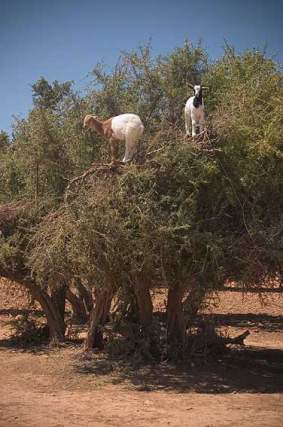

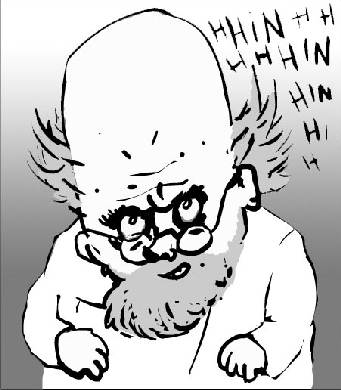
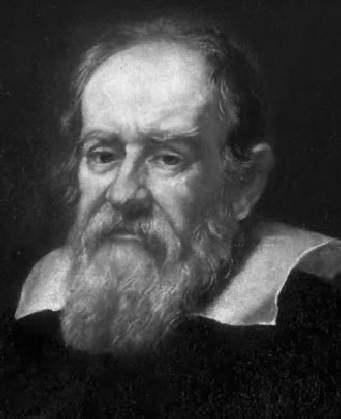
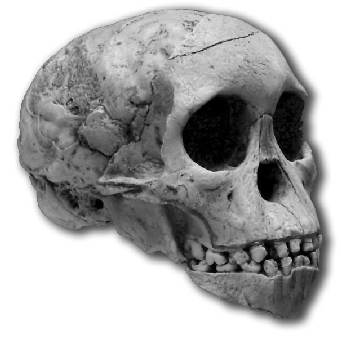
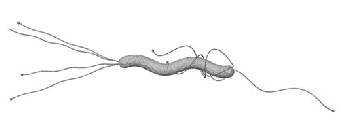
 Few though they are, these lines were hard fought for by the New Zealand membership of the Great Ape Project, and one of the most persuasive of advocates was Professor David Penny. An activist by disposition – he protested the Springbok tours and the Vietnam war – he says we should accord the great apes greater consideration, letting our morality be driven by the evidence presented by our science. We now know how close to us they are. In fact, viewed through the dispassionate eyes of molecular geneticist and evolutionist David Penny, we are ourselves great apes. The differences between their species and ours are of degree, not kind.
Few though they are, these lines were hard fought for by the New Zealand membership of the Great Ape Project, and one of the most persuasive of advocates was Professor David Penny. An activist by disposition – he protested the Springbok tours and the Vietnam war – he says we should accord the great apes greater consideration, letting our morality be driven by the evidence presented by our science. We now know how close to us they are. In fact, viewed through the dispassionate eyes of molecular geneticist and evolutionist David Penny, we are ourselves great apes. The differences between their species and ours are of degree, not kind.